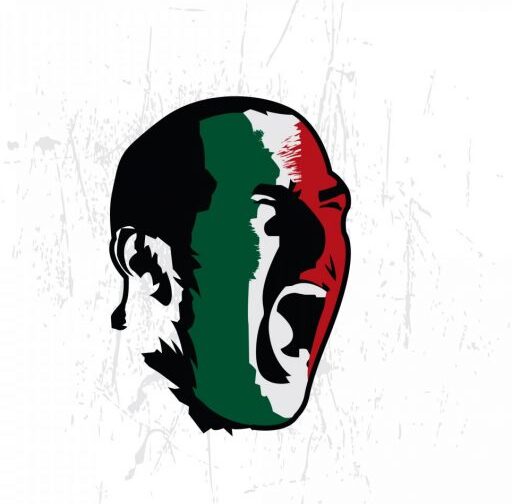AC Milan was formed on December 16th 1899, Marco Jackson takes a look back at the history of the club and it’s origins.

It began, as the badge suggests, with the English.
Indeed, it began with a group of Englishmen who found themselves in Italy and understandably missed cricket. They gathered in a tavern just to the north of Milan’s Duomo on 16 December 1899 to discuss this, amongst other things, coming to a number of agreements over the course of the evening.
Two days later, the Gazzetta Dello Sport – only three years old itself – carried a small notice announcing the formation of Milan Cricket and Foot-ball Club. They have changed that name over the years, with the one sport taking precedence over the other, and now go by the moniker of AC Milan.
The red and black stripes appeared very early on in the story – as did the first trophy. On 5th May 1901, 5 Englishmen, 5 Italians and a Swiss represented Milan as they beat Genoa 3-0 after extra time to lift their first Italian Championship.
Many more were to follow – two more before 1910 – but there was a long time after those before for the next. After a series of second and third placed finishes in the late 1940s, the Rossoneri followed their roots and looked abroad again. This time, their eye was cast to the stars of Sweden’s 1948 Olympic gold medal winning side.
The exciting forward line of Gunnar Gren, Gunnar Nordahl and Nils Liedholm had contributed 12 goals in just four games and all three were persuaded to join Milan. Their recruitment was to prove inspired. Gre-No-Li, as they came to be known, fired the Rossoneri to their first Scudetto in 44 years in 1951. They never looked back.

From that day to this, the AC Milan story has been one of the most compelling in sport. There have been soaring triumphs, including European Cups in 1963, 1969, 1989, 1990, 1994, 2003 and 2007. There have been too many Scudetti to list – 18 in all – to go with 5 Coppas Italia, a record 3 Intercontinental Cups and countless other silverware.
These have come about with a twin policy within the playing staff of recruitment from overseas and stability within. The list of foreign stars who have worn the red and black is long and illustrious but not without logic. Seemingly, every time the club is in need of a ‘reboot’ (in modern parlance), they look abroad.
First came the trio of Swedes, of course. They were followed by South Americans, Jose Altafini, Juan Alberto Schiaffino amongst them – there was the intriguing possibility of Pele joining at this stage but as the Rossoneri had Amarildo and the Peruvian Victor Benitez on their books, the league forbade more. Those that did arrive, however, brought success, the Rossoneri of the 1960s being one of the club’s most celebrated eras.
The 1970s and 1980s were years of gradual decline, including an unthinkable relegation, at least partially due to their role in the ‘Totonero’ betting scandal. This began a series of British players coming in to the club – Mark Hateley, Luther Blissett, Ray Wilkins amongst them. It didn’t work.
A new owner, though, looked abroad again, and signed a new triumvirate – from the Netherlands this time. The Dutch trio Frank Rijkaard, Ruud Gullit and Marco van Basten are a touchstone for the recent era of Milanese success. Silvio Berlusconi’s arrival at the Stadio Giuseppe Meazza (the San Siro in common parlance) utterly revamped the club, lifting them from the gutter to the stars in a few short seasons.

Perhaps not coincidentally given their owner’s history, Milan’s primacy came at a time when Serie A was a big televisual draw. The big names in world football flocked to Italy, and at the top of the pile – often, during that period, were AC Milan.
This has seen other non-Italian players becoming dominant figures at the club – Liberian George Weah, Ukrainian Andriy Shevchenko and another Brazilian, Kaka, three of the more notable recent examples.
Yet throughout the foreign contingent, there has been continuity. Gianni Rivera made his debut for the club in 1960, representing the Rossoneri until 1979. By that time Franco Baresi was a member of the squad, a position he held until 1997. At that stage, Massimo Ambrosini was making his breakthrough, remaining with the club until 2013.
Through those three players alone, 53 years of Milan history can be traced. Add in their team-mates – the likes of Paolo Maldini, Alessandro Costacurta and Mauro Tassotti, the Diavolo history books take on a distinctly more domestic feel.
In truth, it is both. Milan, alongside Juventus, have dominated the Serie A landscape for so long that they all but embody it. Just as Manchester United in England and Barcelona in Spain, they are clubs that players aim their careers for when they begin – be they in Italy or elsewhere.
116 years old this week, AC Milan are a venerable institution. Having spent so long lifting so many trophies above their head, they can be forgiven for taking a breath.


